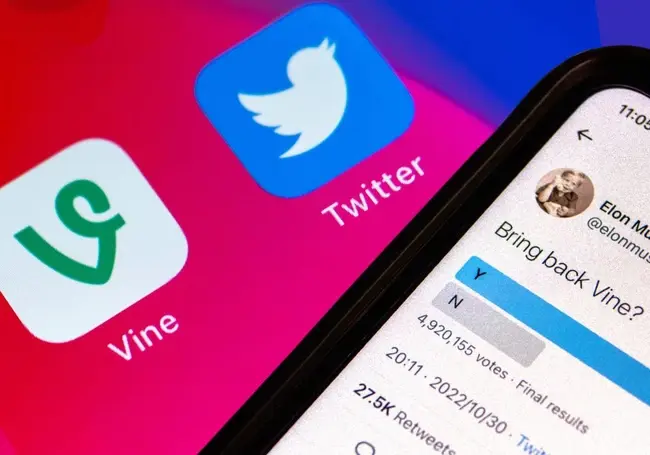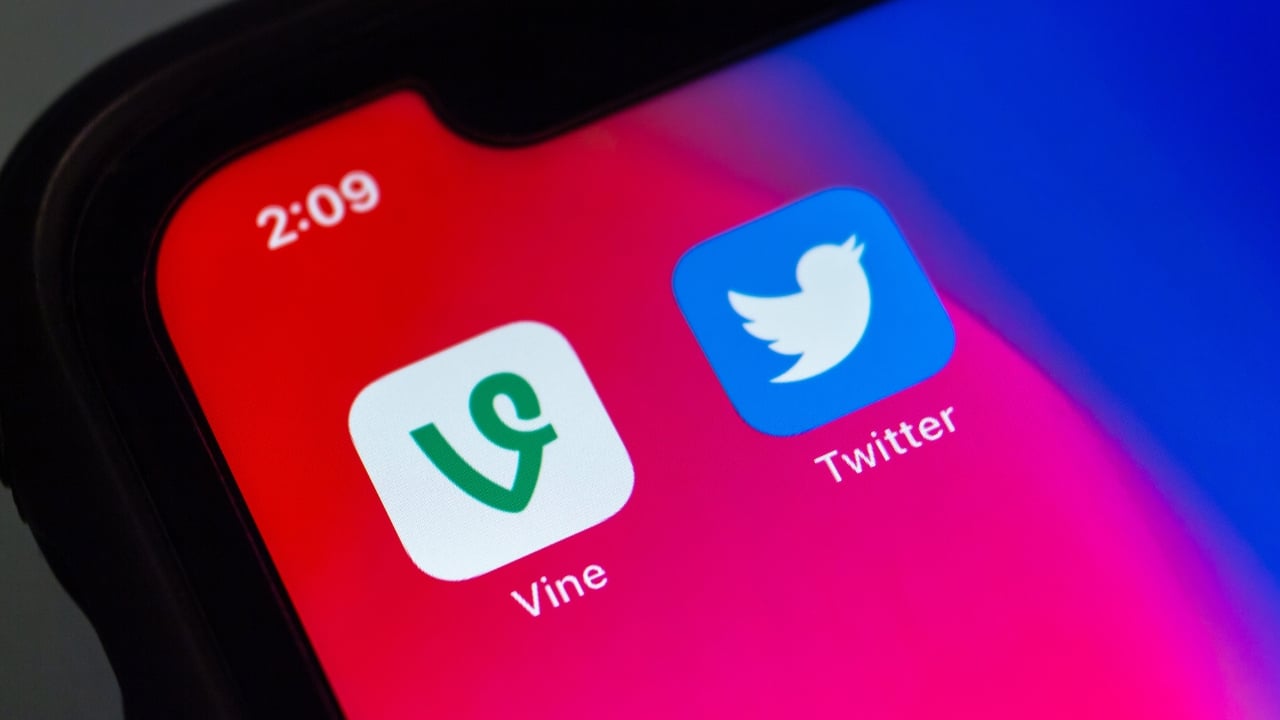In the fast pace of the social media world, few platforms have risen and fallen quite as dramatically as Vine.
Vine revolutionized online video and the humour style of a generation. With its six-second time limit creators were forced to condense storytelling and humor into a bite-size, attention-grabbing format.
In this article, we’ll explore what happened to Vine, why the popular video-sharing platform shut down and the legacy it left on the social media space.

What is Vine?
Founded by Dom Hofmann, Rus Yusupov, and Colin Kroll, Vine started as ‘Vine Labs’ in June 2012. Their concept was a social media platform that was focused on sharing short, looping clips, with a strict six-second time limit.
Twitter saw the potential and acquired Vine for a reported $30 million in October 2012, even before its official launch.
Vine launched publicly in 2013 and quickly took off. The six-second limit forced a new kind of comedic storytelling. It wasn't about elaborate setups or long punchlines; it was about delivering the funny in a quick, unexpected way.
Vine quickly became the place for the cultural zeitgeist. It was a breeding ground for memes and birthed countless catchphrases, trends, and visual gags that spread like wildfire across the internet.

Vine's six-second format may have been short-lived, but its comedic influence stretched far beyond the app itself with TV shows and movies incorporating Vine-inspired humour. Sketches became shorter, punchlines quicker, and unexpected cuts became a common editing technique.
A simple concept like flipping a water bottle, eating cinnamon or the mannequin challenge could explode across the platform, with creators putting their own spin on each challenge.
While many challenges were lighthearted, some tackled social issues. The #IceBucketChallenge raised awareness for ALS, showcasing Vine's potential for social impact.
Who Are Vine Celebrities?
A unique community of creators emerged on Vine. Personalities like Lele Pons, Logan Paul and Shawn Mendes were able to launch huge careers by leveraging their Vine success. Collaborations were common, with creators referencing each other's videos and building a shared internet language. It offered a new way to tell jokes, share experiences, and connect with others.
Brittany Furlan is another top Vine star, who was named by Time magazine as one of the most influential people on the internet in 2015. She was once the most followed female video star on Vine, and his since broken out into acting.
Gabrielle Hanna also found initial fame on Vine, before moving across other social media platforms and continuing to build her following. She is now known as a singer-songwriter, releasing a debut album in 2022.
How Did Vine Work?
Whilst platforms like YouTube focussed on building organic subscriber counts and communities around specific creators Vine offered something fresh- algorithmic recommendations.
The Explore Page wasn't just a random assortment of videos. It curated content based on your watch history and who you followed. This meant you were more likely to see Vines you'd actually enjoy, much like the way TikTok's For You Page (FYP) works now.
The ‘Popular Now’ tab showcased the hottest trending Vines of the moment. It was a great way to see what everyone was buzzing about and discover new viral sensations.
‘Trending Hashtags’ were similar. Just like on Twitter, hashtags were a big deal on Vine. The explore page displayed trending hashtags, allowing you to see all the Vines tagged with a particular term.
There were also curated category ‘channels’ that included genres like comedy, music, or animals if you wanted to specify what you were looking for.
What Happened to Vine?
Vine shut down in January 2017. Due to declining user growth and the ongoing financial strain, Twitter ultimately made the difficult decision to shut down Vine.
The app was officially discontinued a few months later. Frustrated creators at the time believed that Twitter could have done more to save Vine.
If they had provided more support, addressed monetization issues, and offered clearer leadership, Vine might continued to be a leading social platform
Why Did Vine Shut Down?
Vine shut down because it was unable to monetize and retain creators. Its parent company, Twitter, was facing its own financial and leadership challenges, leaving Vine with less support to compete effectively in the evolving social media landscape.
Despite Vine’s meteoric rise and impact- cracks began to show in 2015. Creators were generating massive amounts of views and engagement but struggled to make money directly from their content on Vine as there were no monetisation options. Unlike longer-form content there was no opportunity to include in built sponsorship authentically.
On the other hand YouTube, with its established advertising and partnership programs, offered creators a clear path to monetization. Instagram launched Instagram Video, which would later become IGTV and then Reels, in 2013, offering a similar short-form video format. But unlike Vine, Instagram integrated monetization options through advertising and brand partnerships. This led creators to migrate to platforms like Instagram and YouTube once they had made a name for themselves on Vine.
Read: Meta Sued for Making Instagram Too Addictive for Kids
Many Vine stars had to resort to side hustles to support themselves while creating content on the platform. This could involve selling merchandise, asking for donations from fans, or pursuing brand deals outside of Vine. This reliance on external means of income was unsustainable for many creators, especially those just starting out.
The struggle to make money on Vine had a ripple effect. Without a steady stream of big-name creators, the platform lost some of its appeal for viewers. Fewer viewers meant less advertising revenue for Vine, creating a vicious cycle.
While Vine was facing its own challenges, the situation wasn't helped by internal struggles at its parent company, Twitter. As Vine rose in popularity, Twitter itself was facing financial difficulties. This led to a shift in focus and resources within the company. Twitter had to prioritize its core platform, leaving Vine with less support and attention.
Read: What Happened to Twitter? Elon Musk’s Rebrand to X Explained as Company Value Plummets
Twitter went through several leadership changes during this critical period. This lack of consistent direction created uncertainty for Vine creators and employees. Without a clear vision for the future, it was difficult for Vine to compete effectively.
The lack of support and clear direction from Twitter impacted Vine's ability to innovate and adapt. Without proper investment in development and marketing, Vine struggled to keep pace with its competitors.
Vine’s Legacy
While Vine is no longer active, its influence on online video and the rise of short-form video content like TikTok and Instagram Reels is undeniable. It showed the potential of short, attention-grabbing videos for entertainment, storytelling, and humor.
The fast-paced, surreal, and often absurdist humor that thrived on Vine continues to influence online comedy. Memes, unexpected cuts, and rapid-fire jokes are all elements we see in online content today, a testament to Vine's comedic legacy
It showed the potential of bite-sized content for entertainment, storytelling, and humor, paving the way for TikTok's explosion. This focus on creative storytelling continues to inspire creators on TikTok, pushing the boundaries of what's possible in a short timeframe.
Vine's explore page fostered a strong sense of community, with creators referencing each other's work and inside jokes flourishing. While TikTok boasts a more global user base, it still encourages collaboration through challenges, duets, and stitches, building a sense of community and shared creativity. However, TikTok takes this a step further with its incredibly popular For You page. This page uses powerful algorithms to curate a personalized feed for each user, showcasing content they're likely to enjoy based on their watch history and interactions. This targeted approach allows even lesser-known creators to find an audience and go viral, further amplifying the collaborative and engaging nature of the TikTok community.
Vine's struggles with monetization served as a cautionary tale for TikTok. By implementing a Creator Fund and other revenue-sharing options, TikTok has addressed a crucial aspect that Vine lacked, allowing creators to make a living on the platform and produce high-quality content.
Can You Still Access Vine?
As of writing, you cannot access the Vine website any longer.
When Vine first shut down, it briefly remained active as Vine Camera. Users were also able to briefly access existing content in the Vine Archive. However, both have since been discontinued and removed.
Where Can I Watch Vine Videos?
While Vine has been removed from the Internet, there are countless numbers of compilation videos available online. The most famous Vines have been memorialised on platforms such as YouTube, Facebook, TikTok, and Instagram.







Comments ( 0 )